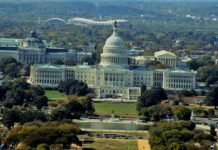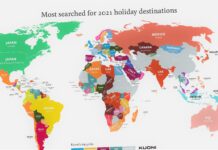The Struggle for Survival: Delving into the World’s Poorest Countries – A Rich Tapestry of Complexity
The Prologue: An Overture to the Struggle
While the global community strives to battle poverty and elevate living standards, countless individuals continue to endure the harsh reality of extreme poverty. Within this article, we embark on a journey through the world’s most impoverished nations, delving into the roots of their economic woes and the tribulations of their denizens. Our prose aims to steer clear of the mundane, embracing both complexity and variation.
Burundi: A Symphony of Political Dissonance and Economic Languor
The Bare-bones Economy
Nestled within East Africa, the diminutive, landlocked Burundi grapples with formidable economic development obstacles. A paltry $234 GDP per capita thrusts it to the forefront as the globe’s most impoverished country. A primarily subsistence agriculture-based populace and an absence of infrastructure and investment exacerbate this predicament.
Tracing the Crisis
Burundi’s economic abyss is intimately intertwined with a turbulent history of political strife and bloodshed. Ethnic animosities between the Hutu majority and Tutsi minority foment discord and stymie efforts to forge a cohesive, inclusive government. Such instability deters foreign investment and stifles economic advancement.
Democratic Republic of Congo: Resource Abundance, Development Scarcity
Concealed Fortune
The Democratic Republic of Congo (DRC) boasts a plethora of natural resources, from minerals and timber to fertile land. Yet, these treasures have failed to deliver widespread affluence. With a $484 GDP per capita, abject poverty remains the norm for the majority.
Corruption and Conflict: Twin Obstacles
In the DRC, pervasive corruption and feeble governance impede the harnessing of natural resources for the populace’s betterment. Compounding this, the nation is mired in armed conflicts that displace millions and claim innumerable lives. Consequently, the DRC languishes as one of the earth’s poorest countries.
Niger: A Desert Nation’s Daunting Quest for Prosperity
A Barren Landscape
West Africa’s Niger, with its $520 GDP per capita, contends with the unenviable title of one of the world’s poorest nations. The arid Sahel region dominates the landscape, posing formidable agricultural challenges and hindering self-sufficiency.
Demographic Burdens and Limited Horizons
Niger’s soaring birth rate exacerbates resource scarcity. A burgeoning population amplifies demand for social services and infrastructure, outstripping the government’s capacity. Scarce educational opportunities and economic diversification further impede the nation’s escape from poverty.
Malawi: Where Smiles Encounter Struggles
The Agricultural Conundrum
Malawi, a petite nation in southeastern Africa, confronts immense obstacles in elevating its populace’s living conditions. A $575 GDP per capita leaves most Malawians impoverished. Despite agriculture providing over 80% of employment, frequent droughts and floods wreak havoc on crops, perpetuating poverty.
The Education and Health Imperatives
Liberation from poverty hinges upon investments in education and healthcare. Malawi has taken steps to enhance educational access, yet quality remains a concern. Healthcare-wise, the nation grapples with infectious diseases and maternal and child health issues. Addressing these challenges is crucial for Malawi’s future prosperity.
Mozambique: A Nation in Flux
Economic Quagmire
Mozambique, situated in southeastern Africa, bears a $642 GDP per capita, relegating it to the ranks of the world’s poorest countries. Since gaining independence from Portugal in 1975, its economy has ridden the storm of tumultuous fluctuations. The aftermath of a protracted civil war and devastating natural disasters have hindered progress.
Harnessing the Potential of Natural Bounty
Mozambique is endowed with vast natural resources, encompassing coal, natural gas, and precious metals. When managed judiciously, these assets hold the promise of economic growth and poverty reduction. Yet, overcoming obstacles such as corruption, political instability, and insufficient infrastructure is essential for ensuring that this wealth benefits all.
The Epilogue: Altering the Course of Destitution
The nations featured within this article share intertwined challenges: political volatility, weak governance, and reliance on agriculture or natural resources. To extricate themselves from the grip of poverty, these countries must prioritize infrastructure, education, and healthcare, while cultivating stable, inclusive governments. The international community’s vital role in offering support and resources is paramount in aiding these nations to construct a brighter future for their citizens. Through focused efforts and unwavering dedication to change, the world’s most impoverished countries can surmount the barriers that have long impeded their progress.
Google News | Telegram
















